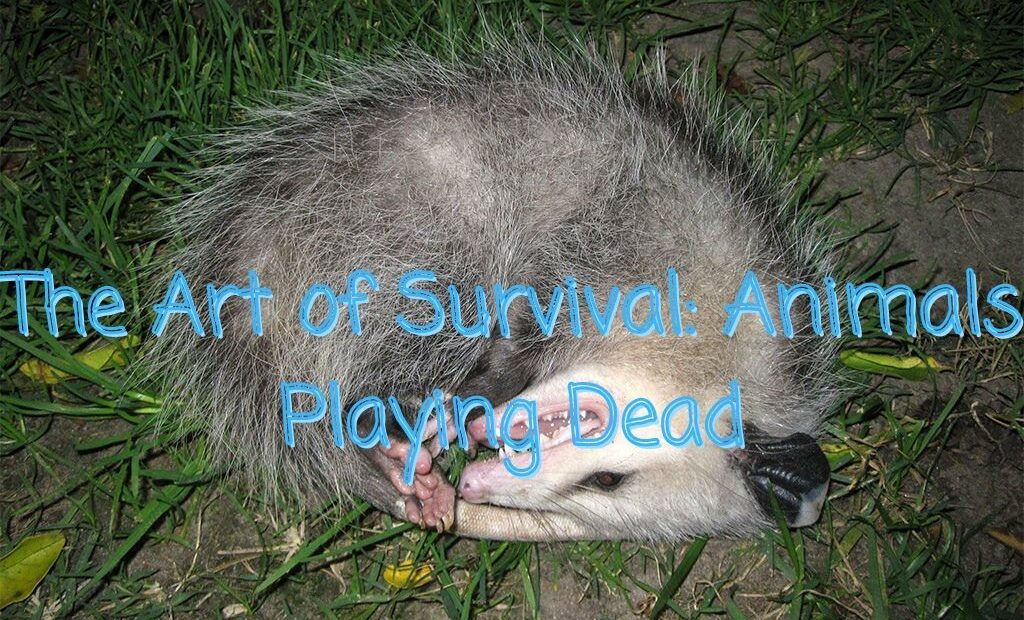The Survival Strategy Unveiled: Why Do Animals Play Dead?

The curious phenomenon of animals playing dead has long intrigued scientists and nature enthusiasts alike. From opossums and beetles to snakes and birds, various species have evolved the remarkable ability to simulate death as a survival strategy in the face of imminent danger. Let’s delve into the fascinating world of thanatosis, exploring the evolutionary advantages and biological mechanisms that underlie this unique adaptive behavior in the animal kingdom.
Surviving the Threat: Understanding the Evolutionary Benefits of Playing Dead
Playing dead, or thanatosis, serves as a clever defense mechanism for certain animals when confronted with predators or other perceived threats. By mimicking the appearance and behavior of a lifeless creature, these animals trick their adversaries into believing that they pose no further danger, thereby increasing their chances of survival and escaping potential harm. This instinctive strategy has been honed over generations, enabling vulnerable species to outwit predators and secure their place in the intricate web of the natural world.
Biological Mechanisms: Triggering the Illusion of Death
The physiological and neurological processes that facilitate the enactment of playing dead involve a complex interplay of hormonal responses and neural signals. When confronted with a perceived threat, the animal’s body initiates a sequence of biochemical reactions that temporarily suppress vital functions, such as respiration and heartbeat, creating the illusion of death. This adaptive response allows the animal to remain motionless and unresponsive, ultimately increasing the likelihood of eluding predators and ensuring its survival in the face of danger.
Species-Specific Adaptations: Diverse Strategies for Survival
Different animal species have evolved unique variations of thanatosis tailored to their specific environmental and ecological contexts. While some creatures employ dramatic displays of stillness and rigidity to deceive predators, others may emit foul odors or release toxic substances as a deterrent mechanism. The diverse adaptations and nuanced strategies associated with playing dead underscore the remarkable versatility and resilience of these species in navigating the complexities of their respective habitats.
Behavioral Limitations and Risks: Balancing Survival and Vulnerability
While playing dead offers a valuable means of evading immediate threats, it also exposes animals to certain risks and vulnerabilities. The prolonged suppression of vital functions during thanatosis can leave animals susceptible to secondary predation or environmental hazards. Moreover, the success of this survival strategy hinges on the predator’s response, and instances of failed deception can lead to fatal consequences. Balancing the benefits and risks of playing dead underscores the intricate dynamics of predator-prey relationships and the delicate balance of survival in the natural world.
Unveiling Nature’s Deceptive Illusion: A Testament to Adaptive Ingenuity
In essence, the remarkable phenomenon of animals playing dead reflects the intricate tapestry of evolutionary adaptations and survival strategies that shape the animal kingdom. From feigning death to ward off predators to capitalizing on environmental cues for survival, these species embody the adaptive ingenuity and resilience that define the intricate balance of life in nature. As we marvel at the complexity of this innate behavior, let us appreciate the remarkable ways in which animals navigate the challenges of their ecosystems, perpetuating the delicate equilibrium that sustains the rich diversity of life on our planet.
Picture Courtesy: google/images are subject to copyright








